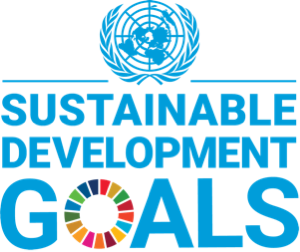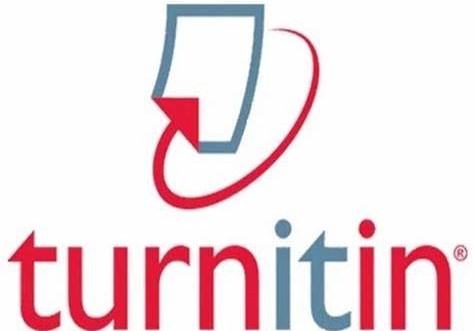Assessment of Perceived Performance of Solar-Powered Borehole Projects in Nigeria
DOI:
https://doi.org/10.52812/msbd.47Keywords:
Solar energy, Project, Impact assessmentAbstract
This study aimed at the assessment of the perspective of the people of Kano-south senatorial district, Nigeria on solar powered borehole projects. This research sought to establish the performance of solar-powered boreholes in terms of presence, their importance, their performance, and maintenance culture as well as provide solutions to possible problems that the senatorial district may be encountering in the usage of these amenities to ensure good sustainability. The survey research method was adopted for this study, and data were collected from 400 people who represented the sample size. The analysis of the data collected showed that 88.6% of the respondents affirmed the presence of solar-powered boreholes in the study area, which is in line with the hypothesis analysis. Similarly, the result showed that although the solar-powered borehole projects have positive impacts on the standard of living of the populace, most of these amenities are not functional due to the low regularity of borehole maintenance. Based on the views of the end-users, it was recommended that the involvement of community leaders and other end-users, proper training of the end-users, provision of channels of reporting damages, the building of more solar-powered boreholes and adequate provision for maintenance are some of the ways to ensure better sustainability of solar-powered boreholes projects in the senatorial district.
References
Alacevich, M. (2013). The World Bank and Development. The Political Economy of the World Bank, 1–10. https://doi.org/10.11126/stanford/9780804760652.003.0001
Aliyu, M., Hassan, G., Said, S. A., Siddiqui, M. U., Alawami, A. T., & Elamin, I. M. (2018). A review of solar-powered water pumping systems. Renewable and Sustainable Energy Reviews, 87, 61–76. https://doi.org/10.1016/j.rser.2018.02.010
Chesiyna, P. K., & Wanyoike, D. (2016). Determinants of Effective Implementation of Constituency Development Fund Projects in Baringo Central Constituency , Kenya. Impactjournals.Us, 4(4), 31–42. http://www.impactjournals.us/download/archives/--1462536462-4. Mgmt - Determinants of effective implementation of constituency.pdf
Chilaka, C. F., Obianua, O. U., & Idowu, A. H. (2021). The Legislature in Nigeria: Origin, Significance and Relationship with Other Arms of Government. Two Decades of Legislative Politics and Governance in Nigeria’s National Assembly, 9–35. https://doi.org/10.1007/978-981-33-4455-6_2
Choudhary, P., Srivatava, R. K., & De, S. (2017). Solar powered induction motor based water pumping system: A review of components, parameters and control methodologies. 2017 4th IEEE Uttar Pradesh Section International Conference on Electrical, Computer and Electronics, UPCON 2017, 2018-Janua, 666–674. https://doi.org/10.1109/UPCON.2017.8251129
Daudu, I. A., & Fagbadebo, O. (2019). Public Participation in Legislative Oversight: A Review of Nature and Practice in Nigeria and South Africa. Advances in African Economic, Social and Political Development, 233–250. https://doi.org/10.1007/978-3-319-93509-6_13
Dursun, M., & Ozden, S. (2012). Application of Solar Powered Automatic Water Pumping in Turkey. International Journal of Computer and Electrical Engineering, 4(2), 161–164. https://doi.org/10.7763/ijcee.2013.v5.471
Eja, K. M., & Ramegowda, M. (2020). Government project failure in developing countries: A review with particular reference to Nigeria. Global Journal of Social Sciences, 19, 35–47. https://doi.org/10.4314/gjss.v19i1.4
Etim, M. A., Babaremu, K., Lazarus, J., & Omole, D. (2021). Health risk and environmental assessment of cement production in nigeria. Atmosphere, 12(9). https://doi.org/10.3390/atmos12091111
Ezeobi, J. (2021). National Assembly Constituency Projects and Infrastructural Development in Anambra State, Nigeria, 2011-2015. International Journal of Public Administration, 6(3), 2011–2015. https://doi.org/10.36758/ijpamr/v6n3.2021/09
FMWR. (2018). Parastatals in the Federal Ministry of Water Resources. Federal Ministry of Water Resources. https://waterresources.gov.ng/parastatals/
Gbadegesin, A. S., & Olorunfemi, F. (2007). Assessment of rural water supply management in selected rural areas of Oyo State, Nigeria. 55. https://www.africaportal.org/publications/assessment-of-rural-water-supply-management-in-selected-rural-areas-of-oyo-state-nigeria/
Girma, M., Assefa, A., & Molinas, M. (2015). Feasibility study of a solar photovoltaic water pumping system for rural Ethiopia. AIMS Environmental Science, 2(3), 697–717. https://doi.org/10.3934/environsci.2015.3.697
Kalu, P., & Chikwe, J. (2017). Political Economy of Constituency Projects in Imo State (2011-2015). International Journal of Contemporary, 4(4). http://www.ijcar.net/assets/pdf/Vol4-No5-May2017/04.pdf
Kanyesige, B. (2021). Internal Stakeholder Engagement, Organizational Support, Project Team Efficacy and Project Success. A Case of USAID aided Projects in Uganda. Student’s Journal of Health Research Africa, 2(9), 17. http://www.sjhresearchafrica.org/index.php/public-html/article/view/62
Kernick, G. (2014). The Potential of Renewable Energy for Rural Groundwater Supply in the Elundini Municipality. June. https://open.uct.ac.za/handle/11427/13262
Khaemba, C., & Sang, P. (2020). Sustainability of Constituency Development Funded Projects in. International Journal of Project Management, 2(3), 124–141. https://www.serialpublishers.org/index.php/ijpm/article/view/126
Muheeb, I. O. (2019). The Trajectory of the Legislature, Lawmaking and Legislation in Nigeria. Advances in African Economic, Social and Political Development, 33–56. https://doi.org/10.1007/978-3-030-11905-8_3
Muhsen, D. H., Khatib, T., & Nagi, F. (2017). A review of photovoltaic water pumping system designing methods, control strategies and field performance. Renewable and Sustainable Energy Reviews, 68, 70–86. https://doi.org/10.1016/j.rser.2016.09.129
Mwangu, A. W., & Iravo, M. A. (2015). How Monitoring and Evaluation Affects the Outcome of Constituency Development Fund Projects in Kenya: A Case Study of Projects in Gatanga Constituency. International Journal of Academic Research in Business and Social Sciences, 5(3). https://doi.org/10.6007/ijarbss/v5-i3/1491
Ngacho, C., & Das, D. (2014). A performance evaluation framework of development projects: An empirical study of Constituency Development Fund (CDF) construction projects in Kenya. International Journal of Project Management, 32(3), 492–507. https://doi.org/10.1016/j.ijproman.2013.07.005
Nyaguthii, E., & Oyugi, L. A. (2013). Influence of community participation on successful implementation of constituency development fund projects in Kenya: case study of mwea constituency. International Journal of Education and Research, 1(8), 1–16. http://www.ijern.com/journal/August-2013/49.pdf
Olalemi, A. O., & Akinwumi, I. M. (2022). Microbial health risks associated with rotavirus and enteric bacteria in River Ala in Akure, Nigeria. Journal of Applied Microbiology, 132(5), 3995–4006. https://doi.org/10.1111/jam.15497
Oloruntade, A., Konyeha, S., & Alao, F. (2014). Assessing the Sustainability of Borehole as an Alternative to Pipe-borne Water Supply in Some Selected Communities in Akoko Area of Ondo State, Nigeria. Ethiopian Journal of Environmental Studies and Management, 7(2), 881. https://doi.org/10.4314/ejesm.v7i2.8s
Oni, S. (2013). The Legislature and Constituency Representation in the Fourth Republic of Nigeria’s Democratic Governance. Ife Psychologia, 21(2), 232. https://journals.co.za/doi/abs/10.10520/EJC141125
Ozbudun, E. (2015). Social Change and Political Participation in Turkey. Social Change and Political Participation in Turkey, 1–258. https://doi.org/10.2307/2148536
Senthil Kumar, S., Bibin, C., Akash, K., Aravindan, K., Kishore, M., & Magesh, G. (2020). Solar powered water pumping systems for irrigation: A comprehensive review on developments and prospects towards a green energy approach. Materials Today: Proceedings, 33, 303–307. https://doi.org/10.1016/j.matpr.2020.04.092
Shah, S. M. H., Nawaz, M., & Batool, A. (2021). Effect of Manpower and Resource Factors on Labor Productivity at House Building Projects in DHA Lahore. Management Science and Business Decisions, 1(1), 12–20. https://doi.org/10.52812/msbd.14
Shimamura, Y., Shimizutani, S., Taguchi, S., & Yamada, H. (2022). Economic valuation of safe water from new boreholes in rural Zambia: A coping cost approach. Water Resources and Economics, 37. https://doi.org/10.1016/j.wre.2021.100192
Short, T. D., & Mueller, M. A. (2002). Solar powered water pumps: Problems, pitfalls and potential. IEE Conference Publication, 487, 280–285. https://doi.org/10.1049/cp:20020129
Sulemana, M., Musah, A. B., & Simon, K. K. (2018). An assessment of stakeholder participation in monitoring and evaluation of district assembly projects and programmes in the Savelugu-Nanton Municipality Assembly, Ghana. Ghana Journal of Development Studies, 15(1), 173. https://doi.org/10.4314/gjds.v15i1.9
Udefuna, P. N., Jumare, F., & Adebayo, F. O. (2013). Legislative constituency project in Nigeria: Implication for national development. Mediterranean Journal of Social Sciences, 4(6), 647–653. https://doi.org/10.5901/mjss.2013.v4n6p647
Uguru, P., & Meldrum, A. (2019). Water resource management and its impact upon public health in water scarce regions: A comparative study of Nigeria and Spain. The International Journal of Environmental, Cultural, Economics & Social Sustainability. https://www.researchgate.net/publication/334041386
UNICEF. (2019). Water, Sanitation, and Hygiene. United Nations Children’s Fund. https://www.unicef.org/nigeria/water-sanitation-and-hygiene
Yorkor, B., & Leton, T. G. (2017). Solar Water Supply for Rural Communities in River State, Niger Delta of Nigeria. International Journal of Energy and Environmental Research, 5(2), 1–17.
.

Downloads
Published
How to Cite
Issue
Section
License
Copyright (c) 2022 Science Insight

This work is licensed under a Creative Commons Attribution-NonCommercial 4.0 International License.
Creative Commons Non Commercial CC BY-NC: The work is distributed under the terms of the Creative Commons Attribution-NonCommercial 4.0 License which permits non-commercial use, reproduction and distribution of the work without further permission provided the original work is properly attributed.











